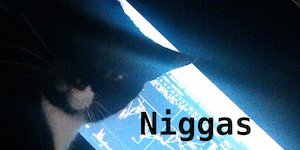Like any player, San Francisco Giants outfielder Denard Span worries about hitting nasty curveballs and losing fly balls in the sun. But he’s got another concern when he’s playing at his home stadium birds pooping on him in the field.
“I’m afraid of them dropping something, using the bathroom on top of me,” Span said. “Or maybe them dropping some food near me and then all of them just freaking swarming me.”
It’s a possibility, considering how regularly flocks of gulls come in off the San Francisco Bay to hover low over the Giants’ AT T Park.
Sports venues across the country struggle to wave off pigeons, bats and gulls, but the two Bay Area ballparks’ proximity to the water and dumps attracts birds in large flocks. It has been such a problem at the Oakland Coliseum that stadium operations officials added a pair of vinyl kites this season in an effort to fend them off.
Gulls typically feed at dumps, but marine biologists say recent efforts taken by some nearby sites to bury the waste faster have kept the feathered creatures away. Now, the gulls circle Bay Area ballparks in the hundreds to scour for leftovers such as those popular garlic fries, creating a nuisance for fans and players – not to mention the grounds crew that goes back to work on the infield
http://www.giantsfanaticsjersey.com/javier-lopez-jersey-c-37.html, basepaths and mound the moment a game ends.
That prompted the two teams to experiment with unconventional measures of dealing with their respective bird business.
In Oakland, the bird brigade was becoming such a problem that the Athletics added two falcon shaped kites this season to try to scare off the gulls. The kites even have catchy nicknames chosen by fans “Falcon McFalconface” and “Scott Hattebird,” after former A’s star Scott Hatteberg.
“We took off the tarps in the third deck for the first time in several years, so it seemed to open up the opportunity for the birds to come,” said David Rinetti, the A’s vice president of stadium operations.
There were a few day games this season when more than 300 gulls circled in and around the ballpark. Players and fans noticed, complaining the birds were making a mess. So Rinetti and his
Matt Duffy Jersey staff needed a solution – and fast.
“I looked up ‘bird abatement, Bay Area’ online and came up with a company that provided these kites that are falcons that supposedly worked to keep seagulls away,” Rinetti said.
They are doing the job so far. The duo even startled Span when the Giants played a Bay Bridge Series game in Oakland earlier this month.
“It got me at first. I thought they were real,” the center fielder said.
At the Giants’ waterfront ballpark, as fans leave, another competition begins gulls fly in from McCovey Cove to hunt for snacks.
“They eat food, scoop it up, compost it,” Giants head groundskeeper Greg Elliott said. “It’s fine for us, but the birds are more of a nuisance for ballplayers.”
In 2012, the Giants were counting on a red tailed hawk nicknamed Bruce Lee to solve their “gull drums.” His presence kept the skies clear for a while. The team built a box for Lee to nest in, hoping to keep the gull chasing predator at AT T Park, Giants senior vice president of ballpark operations Jorge Costa explained at the time.
Yet Lee has since left his post, and, naturally, the gulls are back.
Eating leftovers is far from healthy for the birds, said marine biologist Dr. Jim Harvey, director of Moss Landing Marine Laboratories in Monterey County.
“They’re supposed to be eating fish and squid,” he said
http://www.giantsfanaticsjersey.com/cory-gearrin-jersey-c-35.html, “so eating human food, especially ballpark food, that’s not good.”
Harvey, who also happens to be a longtime Giants season ticketholder, said he is hardly optimistic that baseball franchises will find a permanent, perfect solution because birds always adapt.
“You can put a physical barrier up, create netting around the whole park. But that’s not going to happen,” he said.
Span just wishes fans might consider doing their part by cleaning up their own messes
http://www.giantsfanaticsjersey.com/derek-law-jersey-c-36.html, if only to benefit the birds – and keep them as far as possible from his center field workspace, of course.
“It is like a snow globe , and I’m surprised that one of them has not been struck by the ball,” longtime Giants bench coach Ron Wotus said.
Freak ballpark accidents involving birds have happened in the past.
Hall of Fame left handed pitcher Randy Johnson struck and killed a dove with a pitch in 2001. The now infamous video clip shows the ball drilling the bird, sending an explosion of white feathers into the air.
In 1983, star Yankees outfielder Dave Winfield inadvertently took a gull’s life in Toronto making a throw between innings. Police charged him with animal cruelty, but the charges were later dropped.
Wotus joked that if an accident does happen again, perhaps the Giants might take advantage.
“We can use a seagull ricochet for an RBI double,” he said, chuckling.



